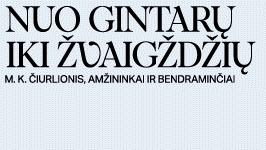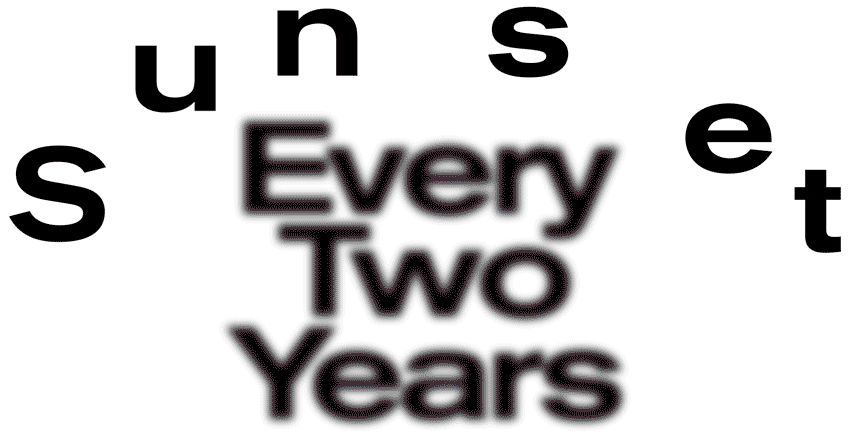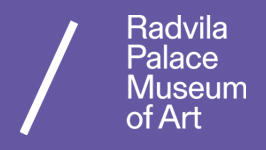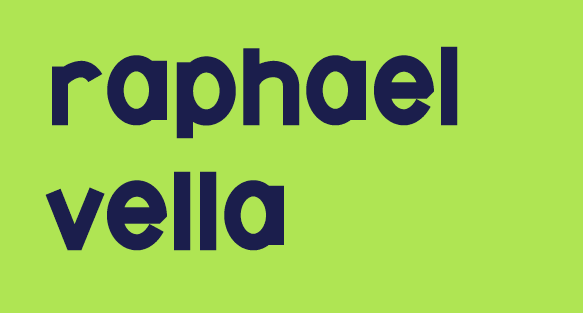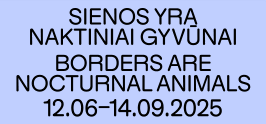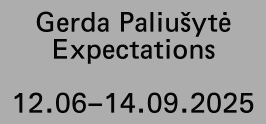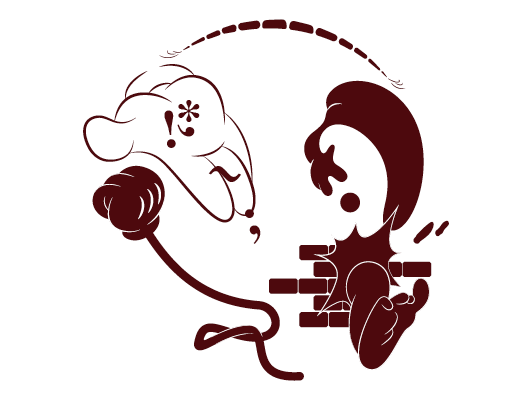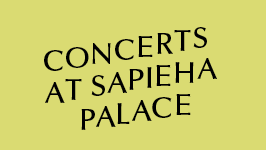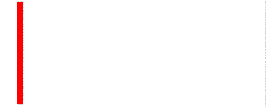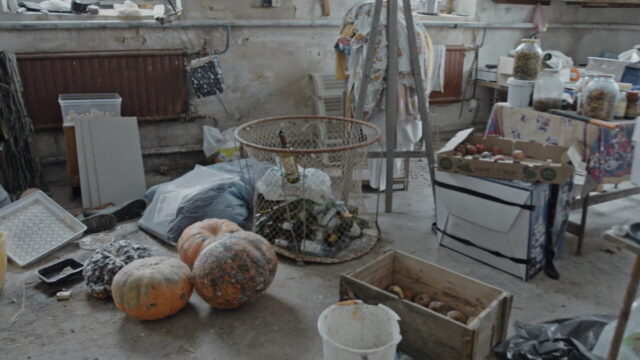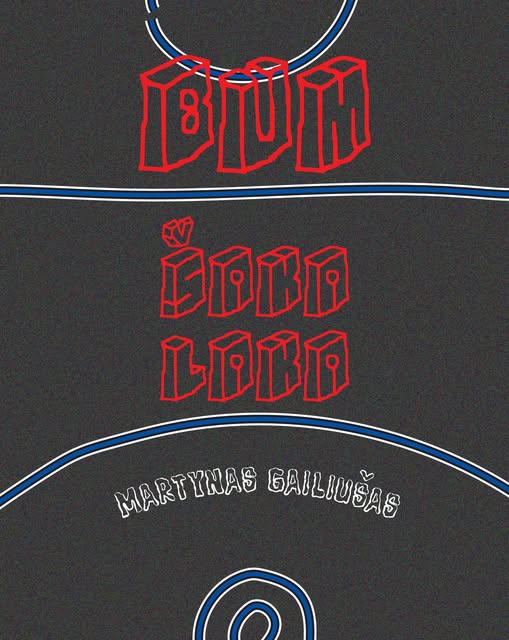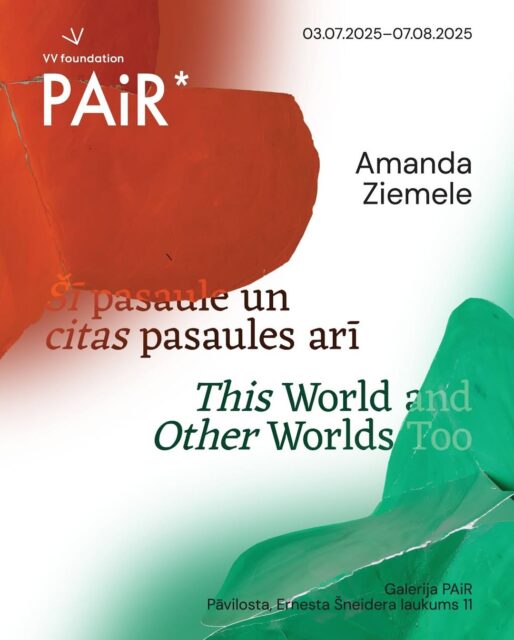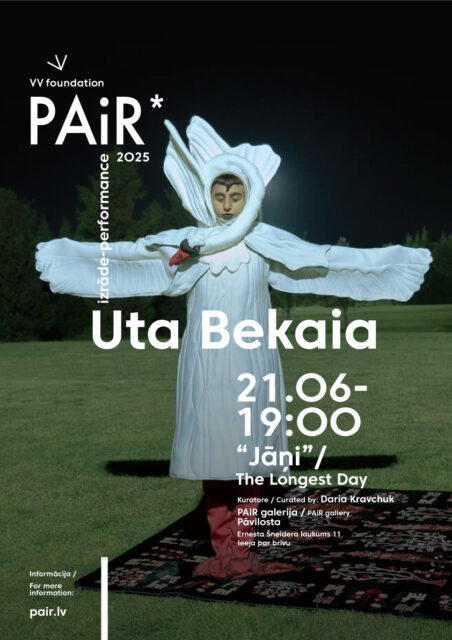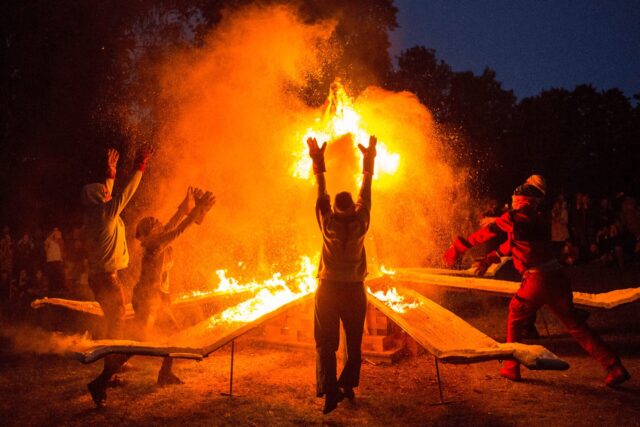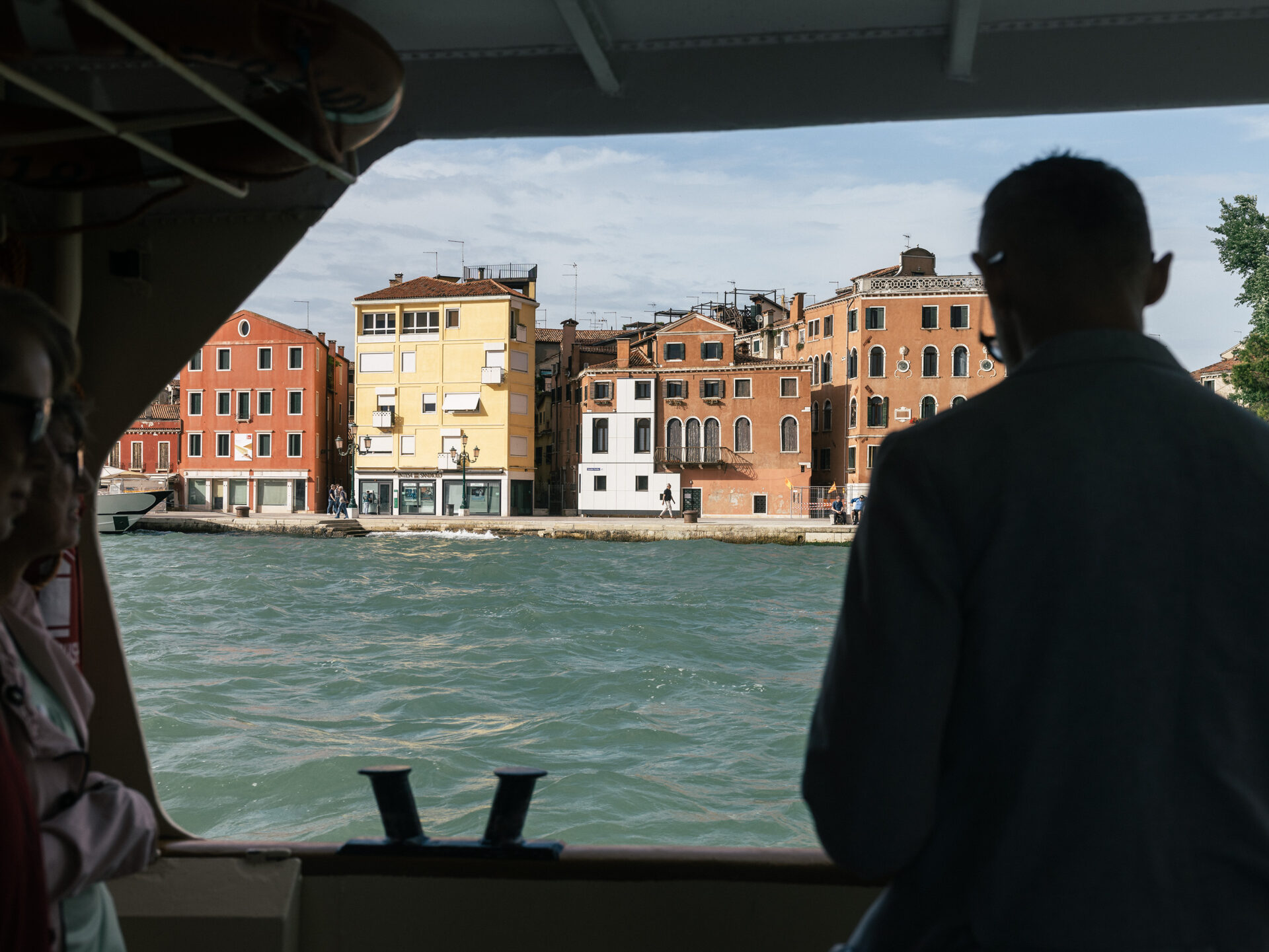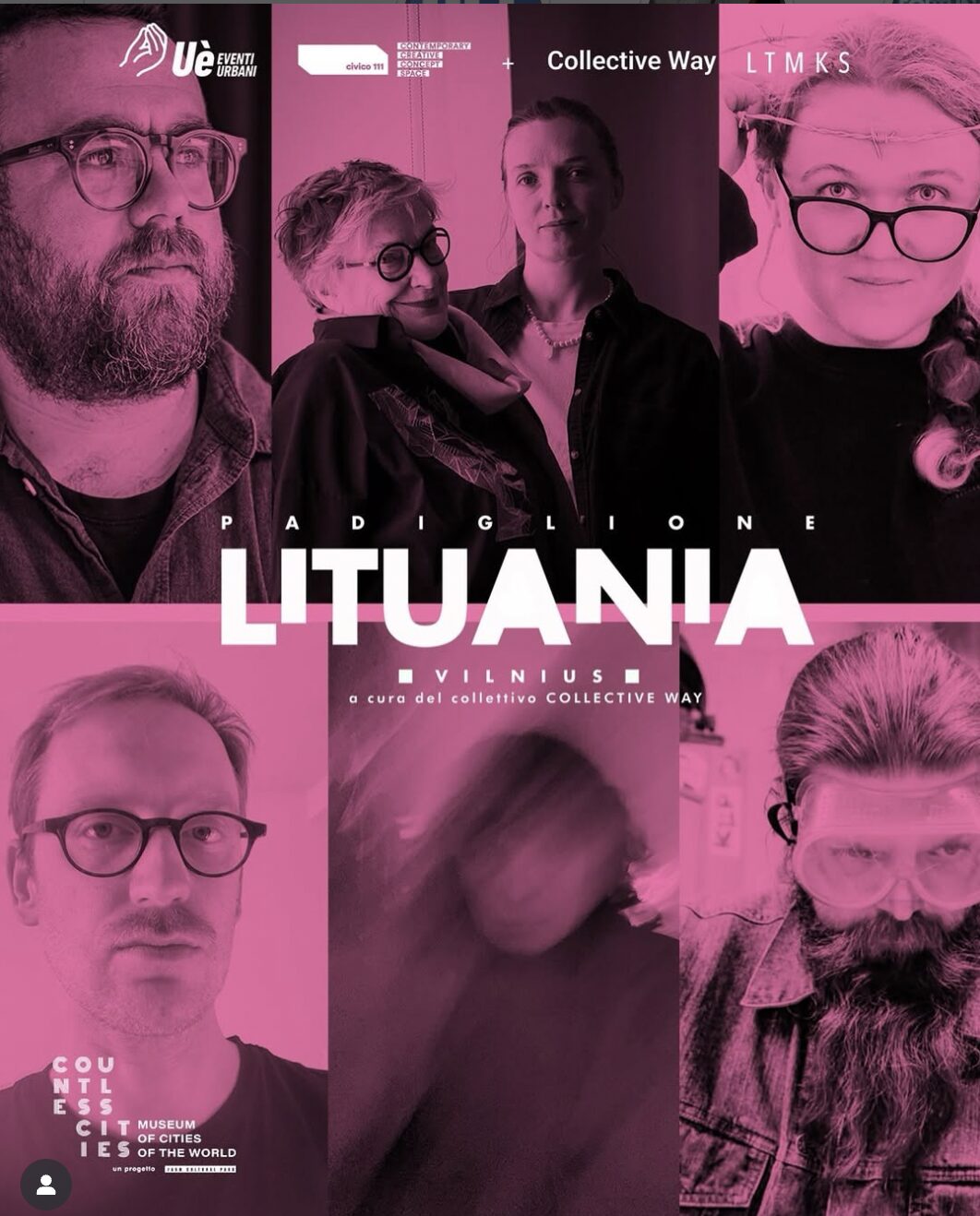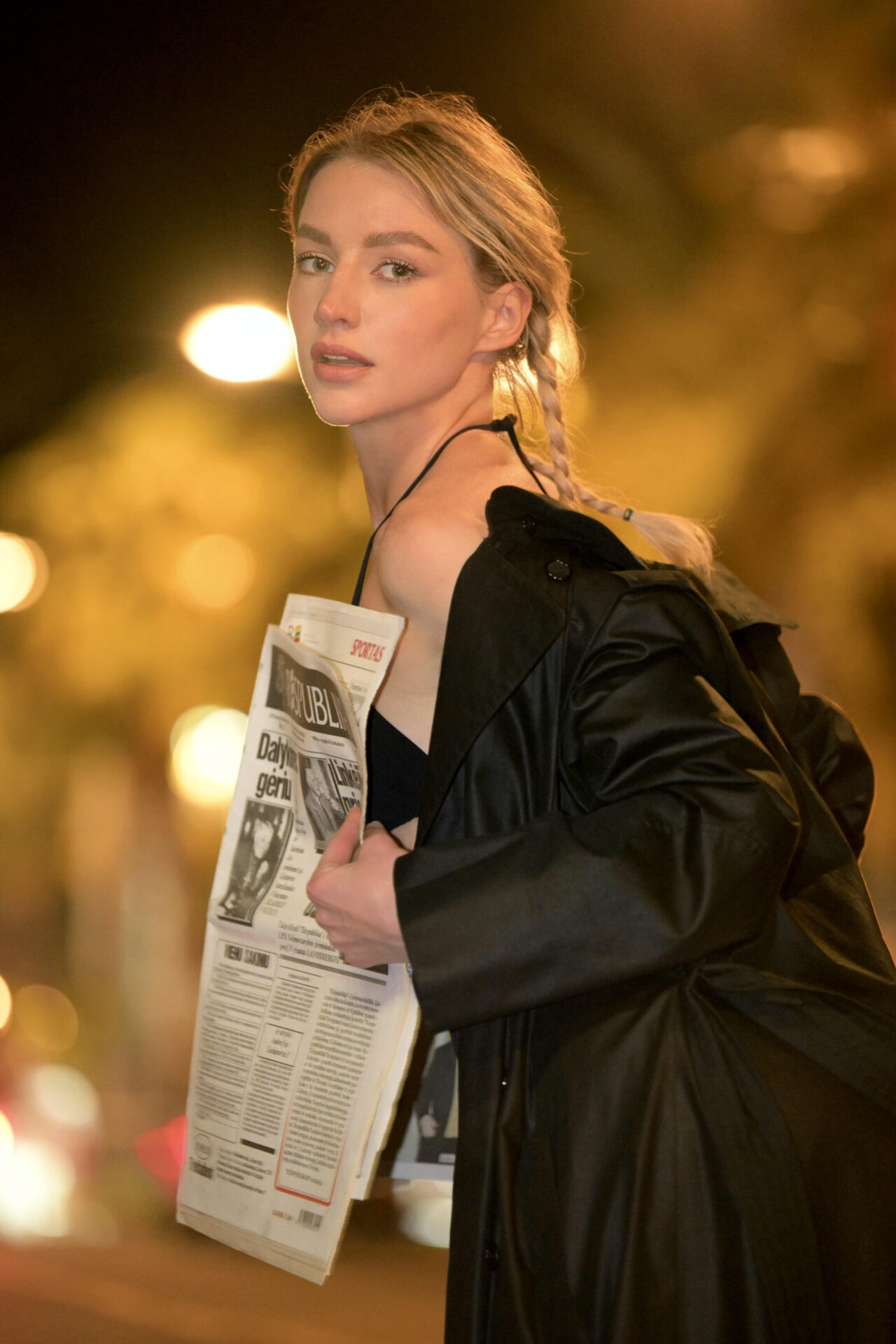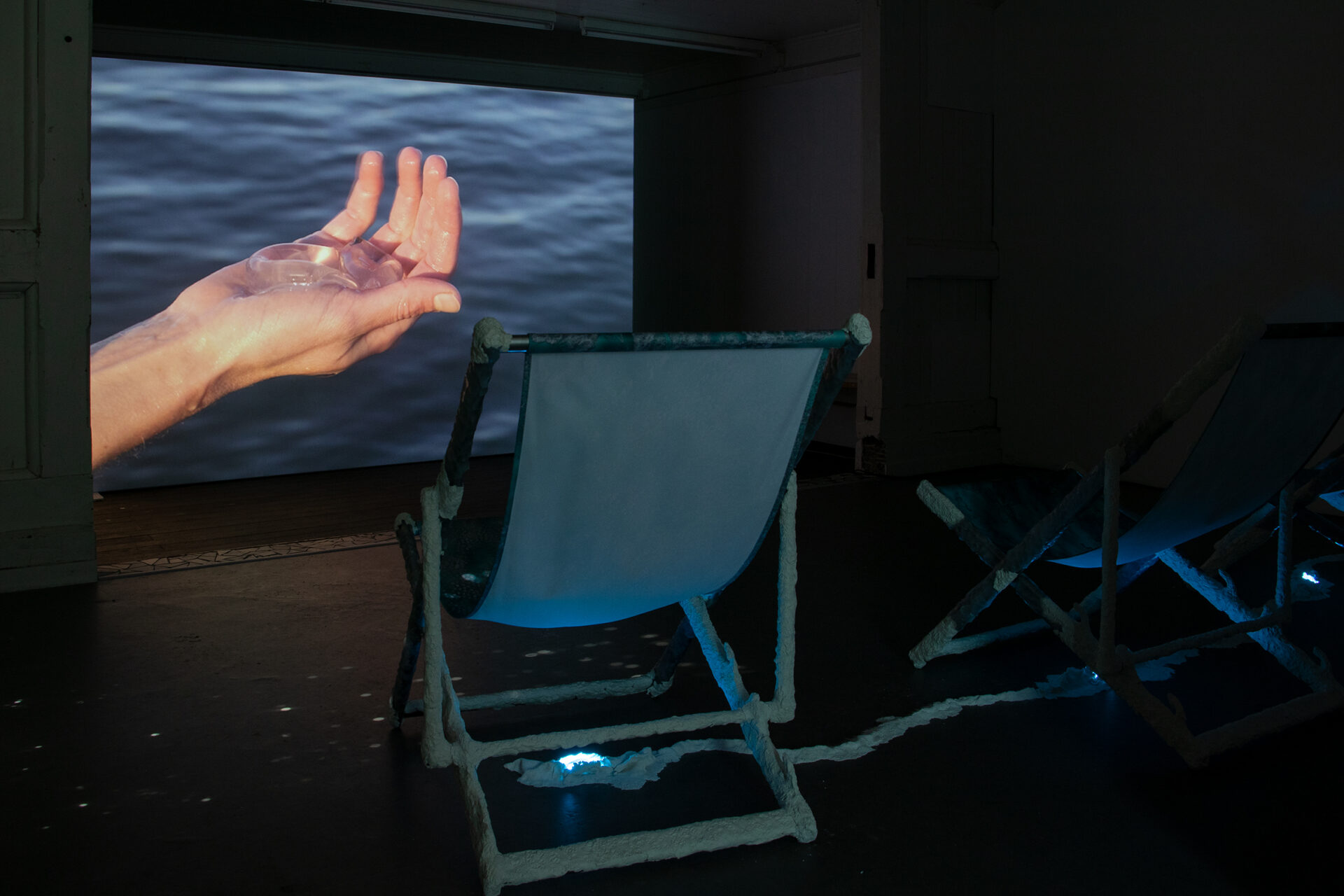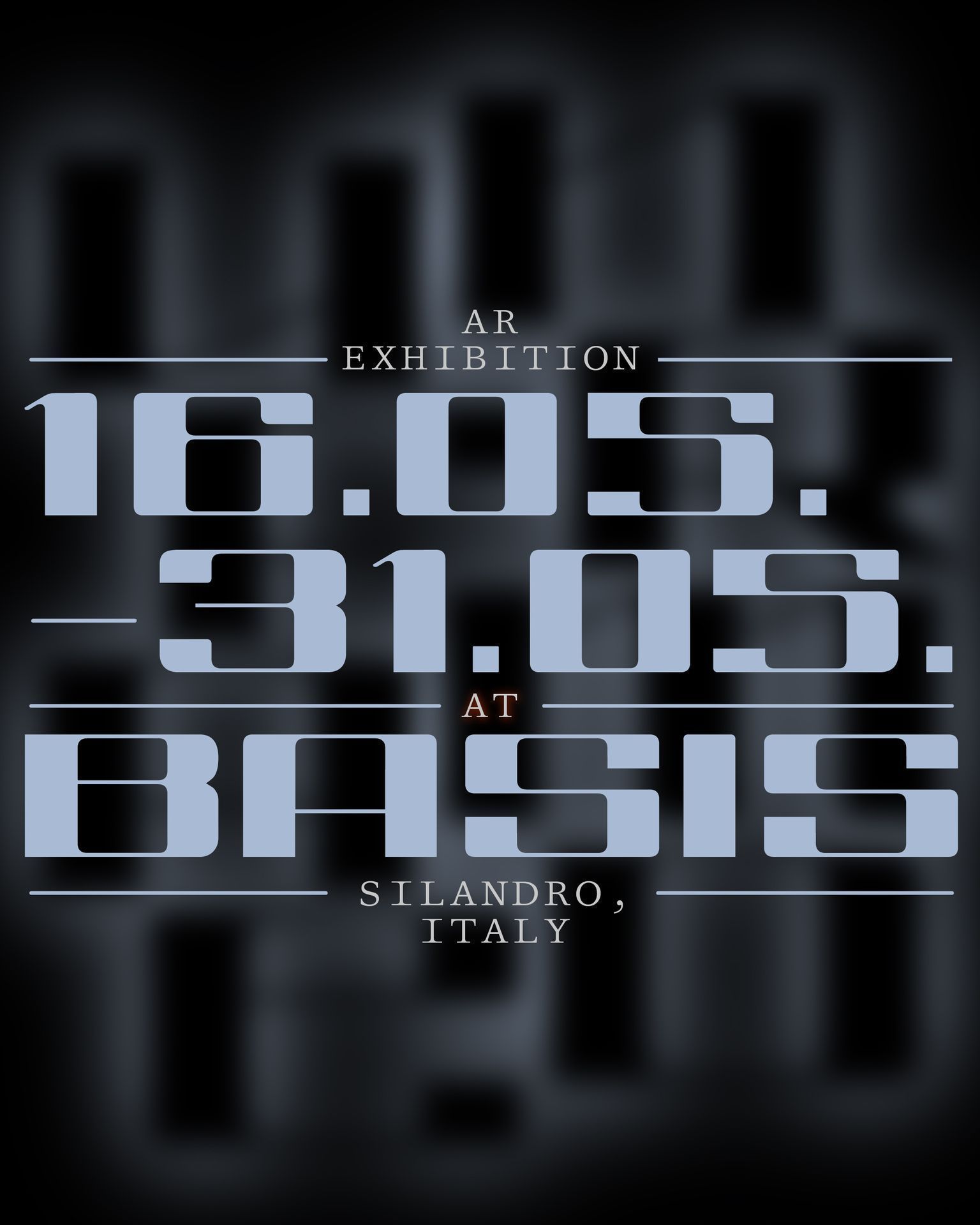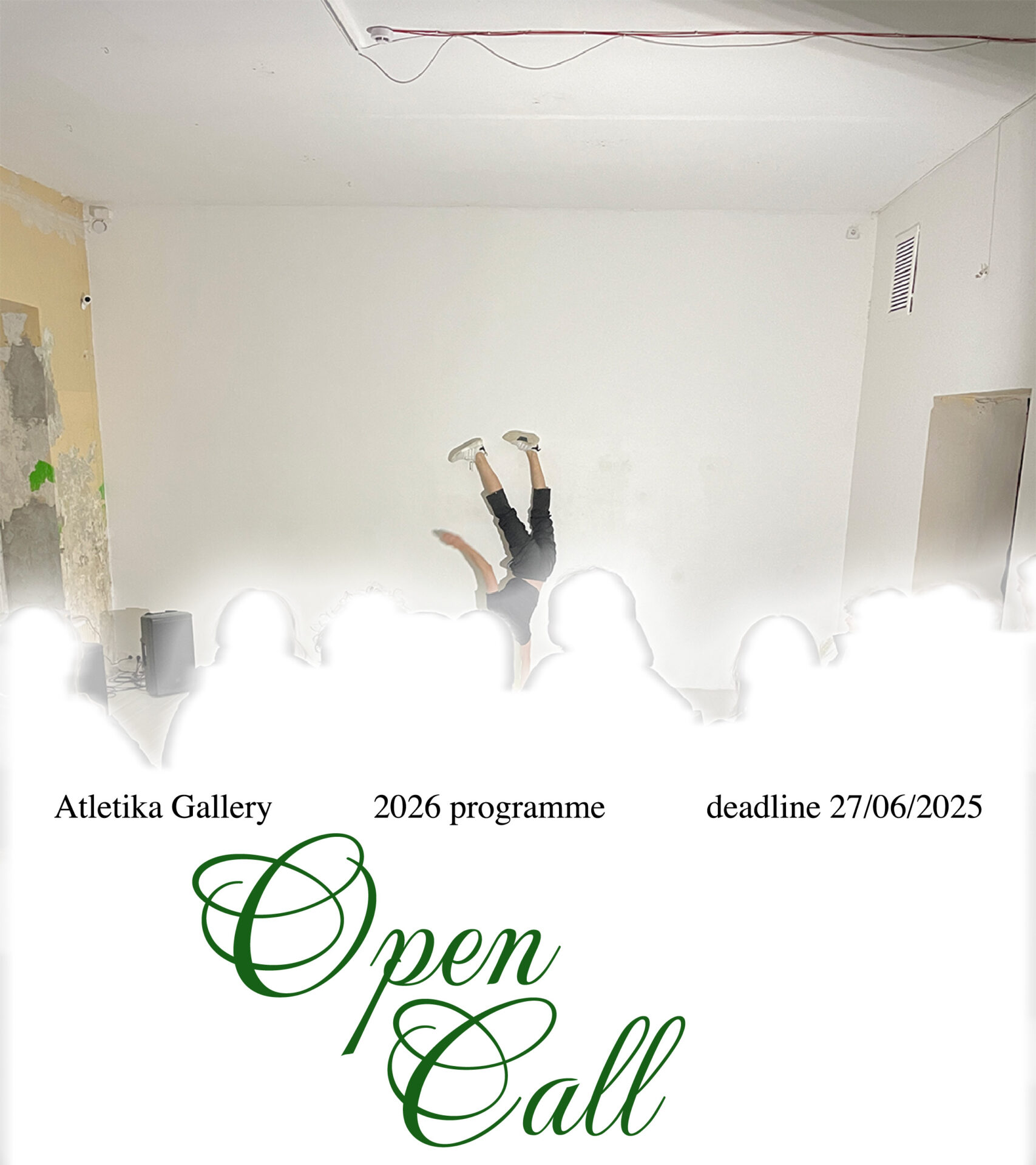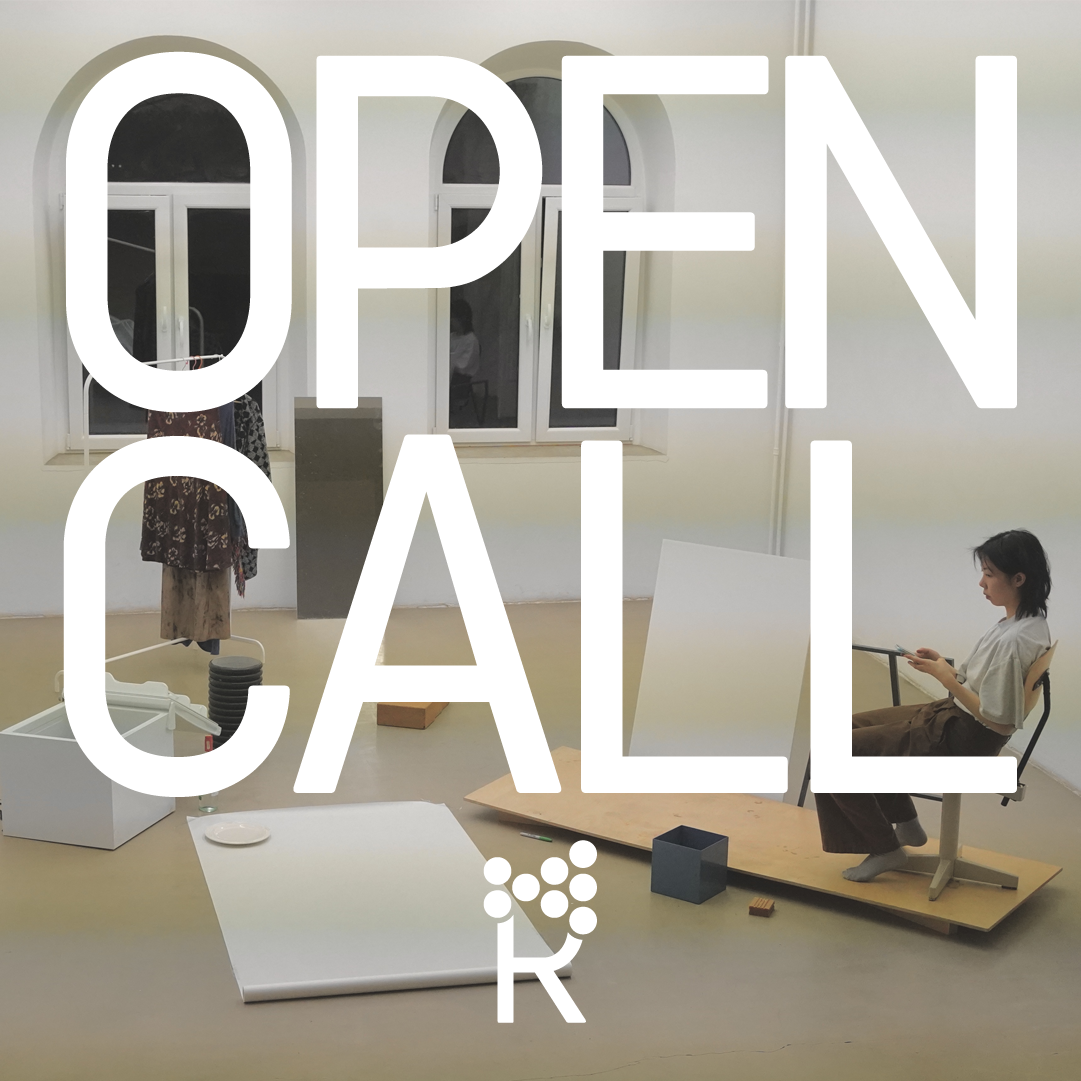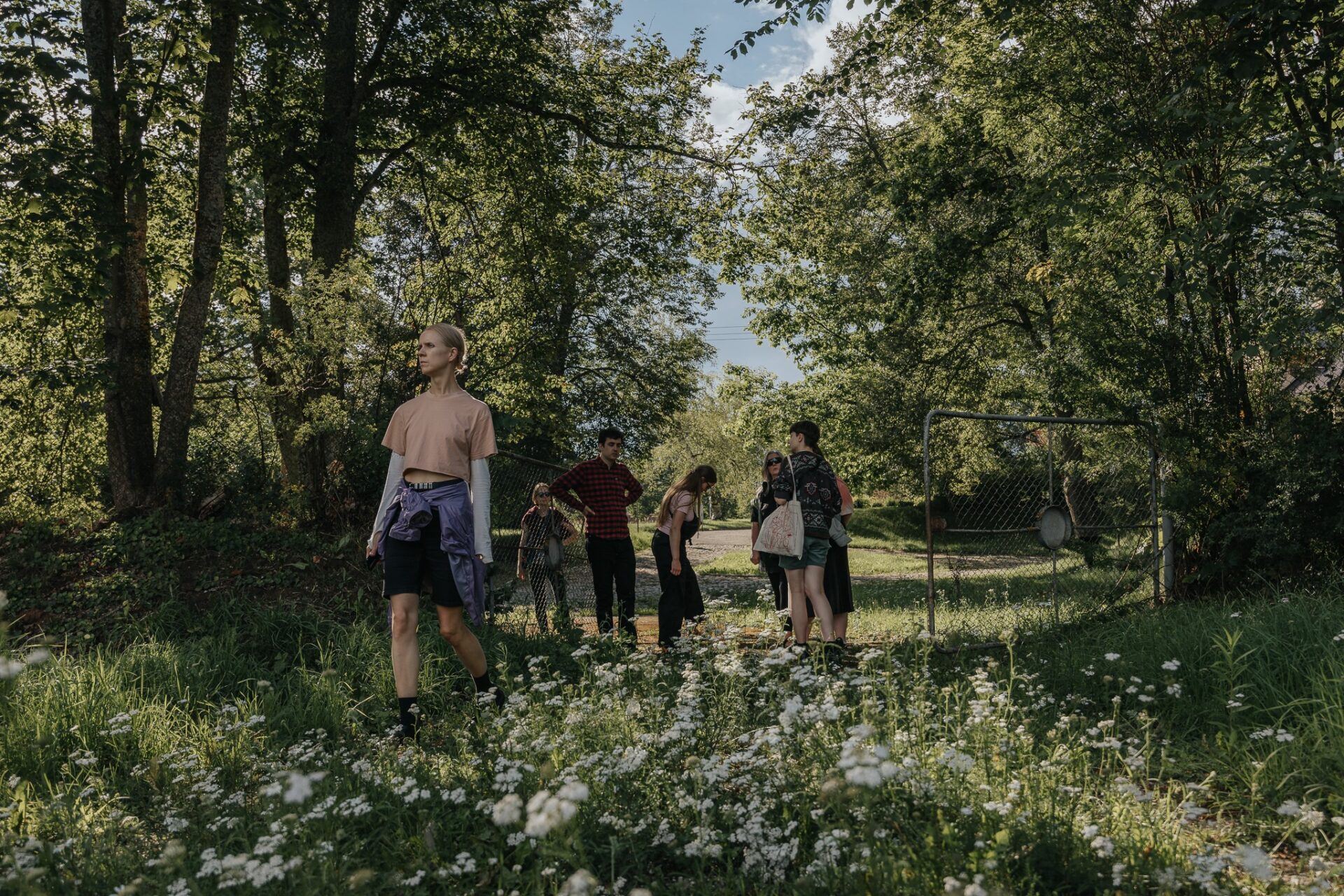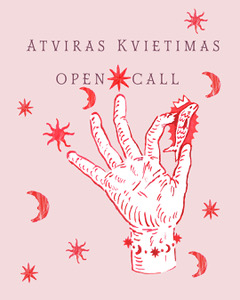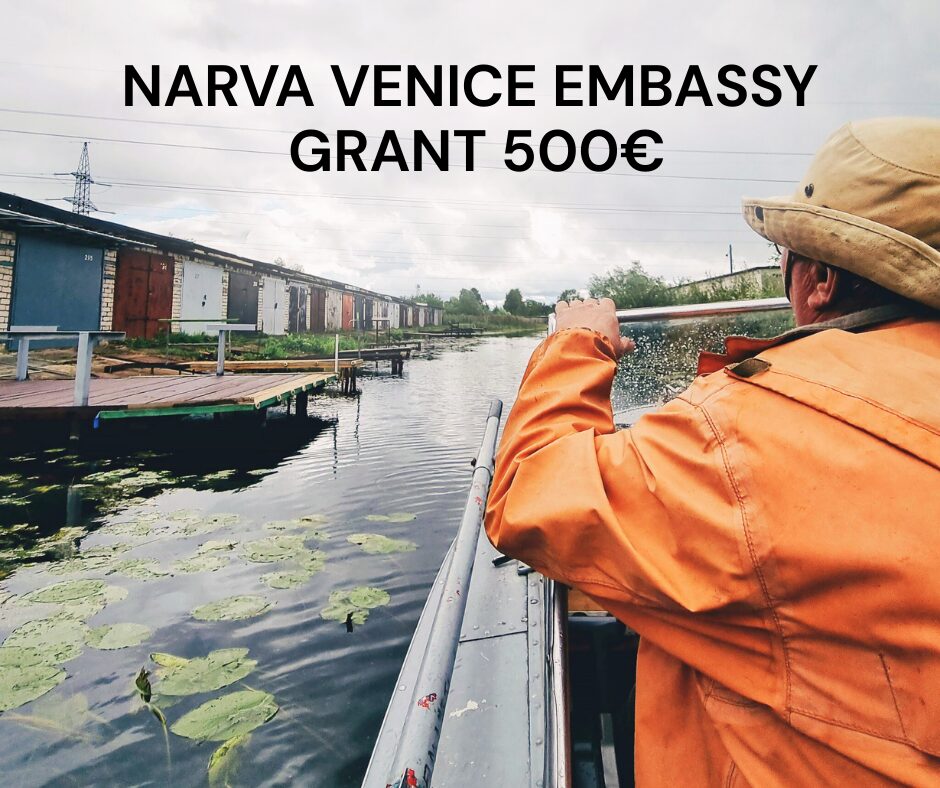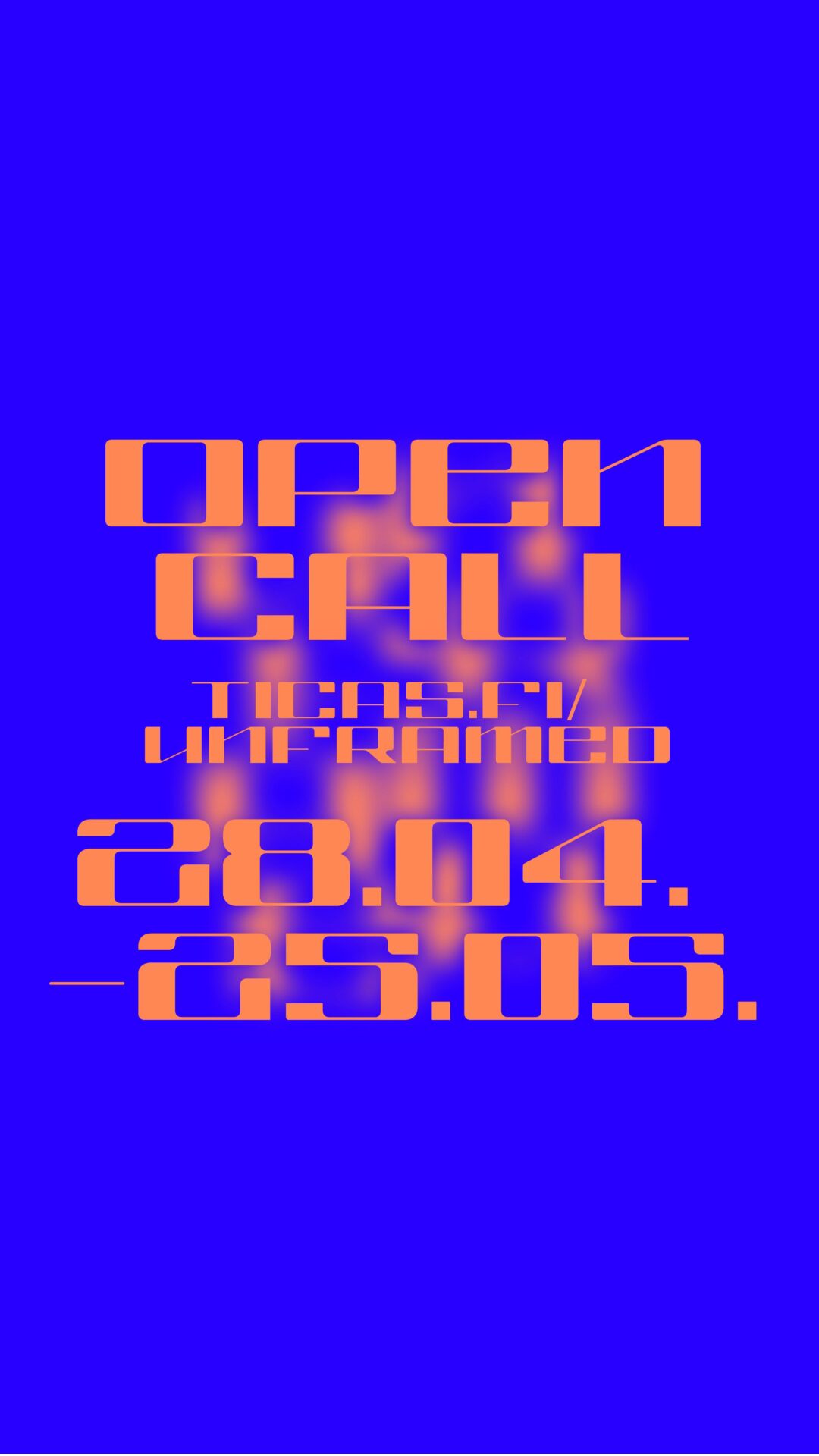In the context of the exhibition ‘Head With Many Thoughts’ at the Contemporary Art Centre, Vilnius, curator and writer Valentinas Klimašauskas talks to artist Marcos Lutyens about his work in the exhibition, the need to create new language and going to pre-language states as well as Lutyens’ previous endeavours in Vilnius.
Valentinas Klimašauskas: What was your first encounter with contemporary art?
Marcos Lutyens: I used to feed the ducks at the Round Pond in Kensington Gardens, London as a toddler and once I wandered into the nearby Serpentine Gallery. It seemed to be the most magical spot in the park, as it appeared out of the woods, near the Lewis Carroll sculpture of gnomes and fairies and the lake evoking a mythical snake. I remember seeing that first exhibition, which I had no idea was ‘art’ – it included an installation of a kind of Kon-Tiki-type raft on sand that drifted through the gallery. Whatever this was, it seemed to be an adult space of playing and dreaming. A few years later my bicycle was stolen while I was inside the same gallery: art gives and art takes away.
VK: When was the first time that you realised you were having a synaesthetic experience?
ML: As a kid all my experiences were synaesthetic. The world was a permanent multi-media event. Do you remember that too? Why are kid’s toys bright and noisy? Because they reinforce this heightened sense of reality around them. Then, gradually, the experience begins to fade until we are ‘normal’ monochromatic-spectrum adults.
I am not naturally a synaesthete now, although I have noticed that in altered states of consciousness, such as a trance state, synaesthetic experiences can be re-experienced and even entrained. Currently, I am studying treatments for stroke patients which use multi-sensory props and cues, on the basis that the brain can be re-wired over time, and similarly, the ‘pruning’ process that takes place in healthy people when a brain transitions from childhood to adulthood can be reversed through specific exercises.
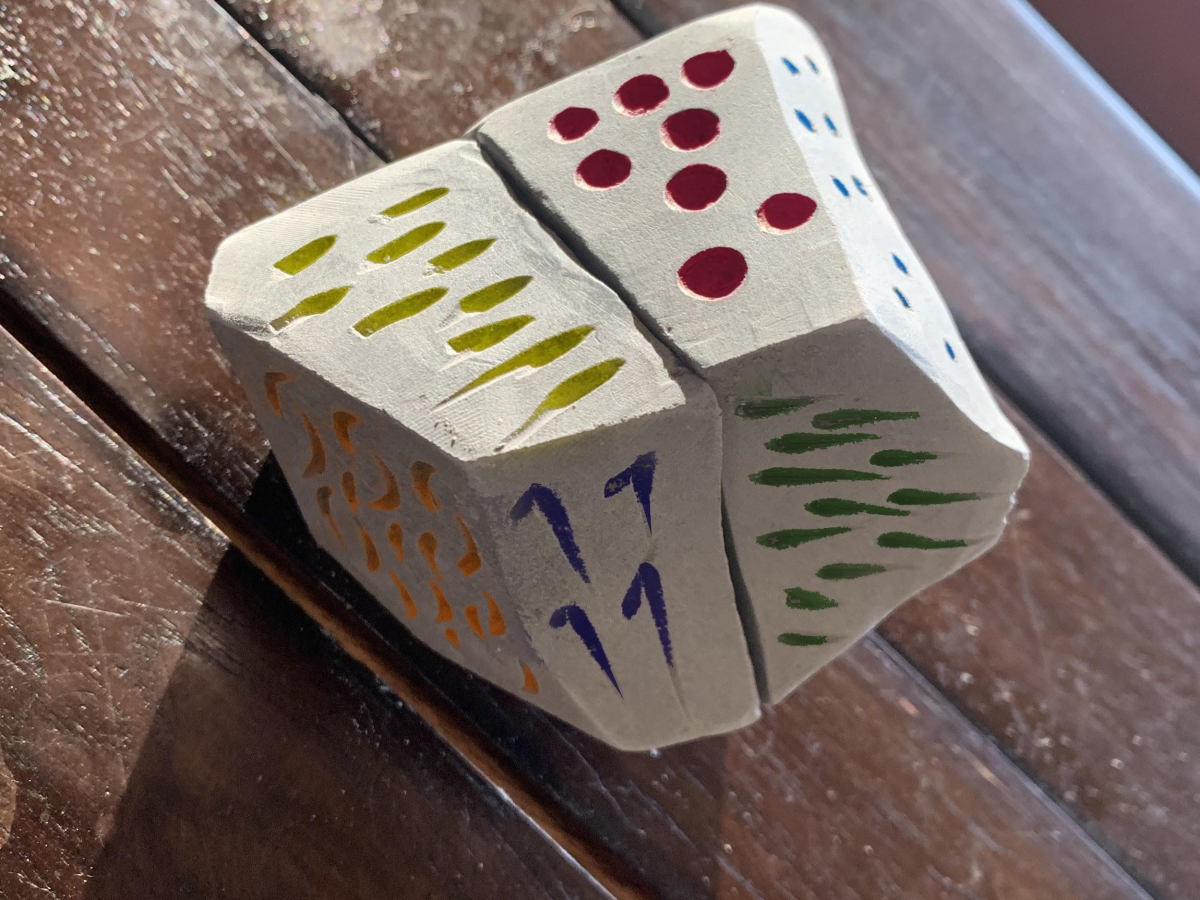
Prototype for stroke patient multi-sensory engagement
VK: When I started learning letters as a child before going to sleep I experienced a rather inconvenient encounter – neon or laser beam-like shapes floated inside my mind and I could change those shapes and colours with the tip of my tongue. It was a pretty tiresome experience for someone who wanted to go asleep. When I was entering one of your Alphabet Huts in the exhibition ‘Head Wirth Many Thoughts’, I was instantly drawn back to my childhood memories. Could you explain more about your initial idea behind the Alphabet Huts? Why huts? How did the idea about it come knocking on your door?
ML: Alphabet Huts was first sketched out on a plate at the cold-war era Neringa restaurant in Vilnius, over a conversation with Virginija Januškevičiūtė about the ultimate place of shelter being perhaps in the cavity, or ‘cave’ of your mouth, out of which a weaving together of words may emanate to create an imaginary dwelling.
The experience of the colour-light letters you had as a child are a reflection of the interconnectedness of the brain, before neural pruning separates the brain centres into their compartmented islands. Some people preserve this interconnection of sensory and cognitive overlaps into adulthood, which is a condition called synaesthesia, from the Latin which translates to ‘union of the senses.’ An Alphabet Hut is an externalisation of the synaesthetic experience, in which, instead of the letter or phoneme being formed inside the mouth, it becomes an object that you can experience around you and thus becoming an external, tangible reality. This is linked to my work with hypnosis, which uses my voice to create para-realities through language as a vector for externalising internal spaces and ideas.
We started the Alphabet Hut project in exhibition form for the 2015 XII Baltic Triennial at the CAC in Vilnius, and quoting curator Virginija Januškevičiūtė: ‘they were not so much constructed environments but appropriated ones, and existed more as narrative pieces. We had two key pieces of the exhibition architecture: Andreas Angelidakis designed a “black mountain” and a mirror wall which performed as Alphabet Huts. An extended tendril of the Alphabet Huts was also shown at the XII Baltic Triennial venue at Bunkier Sztuki, Krakow. The following year another version of the Alphabet Huts manifested as the numbers 2 and 5 visually echoing to infinity in a corridor at the brutalist Dailes Theatre in Riga’.
In the exhibition ‘Head With Many Thoughts’, the 💤 Hut can be found, using the last letter of the alphabet for this edition of Alphabet Huts. The letter Z in comics expresses sleep, so inside, the sound of yawning and the addition of a stream of pure oxygen, as well as specially positioned mirrors to create the impression of a long, straight tunnel, work to transform the visitor into a state of heightened sleepfulness, or relaxed wakefulness which are both sides of the same liminal coin. The Z structure, when seen from the outside has fur-like markings, a soft and inviting texture to contrast with the aggressive and acute angles of the Z. The walls inside the passageway are painted turquoise on one side and orange on the other, to stimulate each side of the body-brain in different ways, adding to the intention of heightened engagement.
VK: If I understand correctly, pre-language experiences are very important for creating ‘para-realities’ in your practice. This question might seem like an irrational leap but I’m very curious to hear your answer – do you have any ideas about how thoughts come into being? How pre-language experiences become language and vice versa? How language dissolves in us and makes an impact on our sensitivities, imaginations?
ML: Sometimes in hypnosis sessions I make suggestions that the tongue is heavy and relaxed. This is so that it is more difficult for verbal thoughts to emerge. Even when we think thoughts sub-vocally to ourselves, we do that with inaudible words. When doing this, our brain activates neurons that are linked to tongue activity, so by making the tongue inactive, thoughts also become slower. And behind the screen of thoughts made with words, is the deep level of mind, that works with geometries to enable the self to navigate the world, and from there, it composes meaning and words through it. An analogy would be how mathematics enables space travel, even though it is hidden behind the material functioning of the rocket. So in my view, the deeper level of mental activity is orchestrated through interlinking geometries and triangulations, which create a matrix of interrelationships that culminate in thoughts and emerge in communication as language. This kind of pre-linguistic thinking has been studied in the field of biosemiotics, which investigates non-verbal meaning-making.
I regularly have visual migraine auras and sense the scintillating scotoma, zig-zag geometries that form before my eyes to be a glimpse beneath the hood of the operating of the mind. Likewise, psychedelic experiences may also trigger these glimpses of how the mind is trying to create meaning out of electrical and chemical flows inside the brain. In these states one can observe the brain’s shortcuts in cognition processing tasks such as the scanning for symmetry, facial recognition reflexes, or attempts to locate patterns that repeat. These are ways in which the root level of mind can be seen in action. Then we could also think about proto-language and how language came into being. There is the famous Stoned Ape theory first proposed by Terence McKenna that suggested that the ingestion of certain mushrooms created a synaesthetic experience in early humans that stimulated a relationship between voice and meaning. This process generated onomatopoeic word sounds as the starting point of language. We still have these types of words sprinkled in our language such as gurgle, mumble, slam and 💤.
But before language even starts to express itself, the opportunity of experimenting in the mental areas before verbal communication presents us with the possibility of understanding things in very different ways, perhaps more fundamental ways, or conversely more unexplored ways: the word ‘original’, stemming from the root ‘origin’ covers both directions. And with all the social and environmental jeopardy around us, we most certainly need to explore entirely new ways of thinking. Words, ideas and actions by themselves, using old thought patterns will definitely not be enough.

Marcos Lutyens, Alphabet Huts (Zzz), 2020. Installation (architectural construction, colour, sound, light, oxygen leak). CAC, Vilnius. Photo: Andrej Vasilenko
VK: How can we stimulate new ways of (pre)thinking, how can we – referring to your answer above – open up that cavity as a safe space for new experiences, new languages, new systems of articulation and communication?
ML: During this Covid-19 time, while things have been shut down and fear and depression is rampant, I have been developing a series of online hypnosis engagements that start from an attention to everyday objects such as tree, mirror, egg, shelter, shoe, honey and using them as starting points to change our way of thinking, being and doing. I have done 10 sessions so far, one per week, and the community that has been following these sessions has given very positive feedback about how these encounters may change their approach to life.
VK: May I ask how exactly the encounters change participants’ approach to life?
ML: An example is the realisation that everything we experience in our lives is subject to recall. For instance, curator Elise Roche was taken back in one of the sessions to her first memory of wearing a shoe as a baby. After the session, her mother confirmed the shoe to be the correct colour and type. Understanding that every detail of our lives is stored within our mental matrix makes us realise how much we carry around with us. How many moments of pleasure and pain are permanently inside us and which parts need to be discarded or reframed? The brain is like a garden which needs to be stimulated in some places and pruned back in others.
Artist Masha Perskaya wrote in response to the sessions: ‘I’ve been thinking these days about the mind now as a puffy jacket, after being packed in a full suitcase. As the luggage is unpacked, it first comes out in the shape of whatever space is left for it in between all the other rigid items, and then it expands, unfolds, takes its space again’.
Maybe the sessions allow people’s minds to expand to their fully intended scope and beyond. I would hope that the two installations at CAC act in a similar way.
VK: I would like to return to what you mentioned before – that we need to explore new ways of thinking because of “the social and ecological jeopardy around us”. The obvious elephant in the room is that language is also seen as some sort of prison – it is charged with open or hidden patriarchal, colonial, and other reactionary agendas. Also, from a psychoanalytical perspective, the way our mind is structured by superego/ego/consciousness/unconsciousness seems to be hierarchical, colonised or suppressed by various sexual, ideological regimes. Thus, both how we express ourselves and how our mind is structured seem to be compromised. I will try to formulate a question here. Do you see your practice or maybe the artistic realm in general as a possibility to rewire our brains and also a way to recreate language?
ML: When one talks about rewriting or perhaps re-programming our brains, we immediately think of the brainwashing and creepy CIA programmes from the 1950s such as Project Star Gate. But in actual fact, if we look around at our collective behaviours and consider facts such as that one football field of rainforest disappears every 6 seconds, we understand that we are in a collective suicide ritual at the moment.
The way our language works, with subject and object divided from each other, is one simple example of how whatever we do passes through this filter of detachment from what is around us. All the other ills such as racist, patriarchal and colonial bias are written, to a more or less fundamental and basic degree within our language. So one would need to invent new grammar and words entirely, but in doing so there is a big responsibility combined with hidden pitfalls. Is it for instance better to give all nouns gender which brings us closer to objects, such as in the French or Spanish languages, or to have gender neutral nouns as in English, which creates less ‘sexist’ dynamics, but also makes objects more impersonal? The quandaries are endless, but one can sense that every language would benefit from learning from others about different types of expressions. For instance, English could incorporate or adapt the word ‘simpatico,’ as somehow that type of warm friendliness that apparently never entered into the mainstream British mindset.
As far as the structure of the mind goes, whether Freudian, or Jungian, or other consciousness models, and taking a view beyond language which will always be flawed, we need to go back to taking the pulse of the autonomic nervous system and getting in touch with our inner selves, at the root level of consciousness. In neuroscience, sometimes people refer to the right brain (which links to the left side of the body) as the ‘mute prisoner,’ because it is a part of the brain that doesn’t usually come into direct conscious though processes. The mute prisoner needs to be freed for us to come into a more balanced understanding of ourselves and how we relate to what is around us. This would involve more use of intuition and creativity, and less reliance on the left brain trap of flawed logic. In the 💤
project, the left and right sides of the interior walls were painted two different colours in order to stimulate both sides of the brain, and particularly to awaken the mute prisoner. This is an example of the type of approach together with the use of hypnosis, that I like to introduce into my work to nudge mental and emotive change.
 VK: The Vilnius art crowd should remember your work from the project Active City Cancellation, when you tried to dematerialise spatial and temporal relationships at the Frank Zappa monument in 2012. May I ask you how your practice has been developing since then?
VK: The Vilnius art crowd should remember your work from the project Active City Cancellation, when you tried to dematerialise spatial and temporal relationships at the Frank Zappa monument in 2012. May I ask you how your practice has been developing since then?
ML: The attempt to dematerialise the world around us, especially the oppressive and nonsensical constructs that have converted our world civilisation into a plane that’s coming down with its engines on fire, was inspired by Frank Zappa. He was constantly seeking new and contrary pathways in music but also socially and politically, especially with regards to the Iron Curtain. From my hilltop perch in Los Angeles I can practically see where he lived, and yet like him, I feel such a strong connection to Vilnius on the other side of the world.
What strikes me about Lithuania is the unique energy of re-thinking, re-creating re-imagining, such as espoused by the philosopher Kristupas Sabolius, the peripatetic, all dimensional Raimundas Malašauskas, offbeat artists such as Emilija Škarnulytė and the institutions of CAC and Rupert that are always willing to break the mould, as well as the amazing arts community at large.
Since 2012 I have been working at all levels of consciousness and creativity to nudge our tribal or collective consciousness towards new directions. Sometimes this involves dissolving away current constructs, while at the same time creating new pathways of behaviour and thought. I am happy to announce that I have just published a book called Quadrant Field with Alberta Pane Gallery and designed by Multiplo that shows how my work in the past 10 years has been devoted to this reframing effort. The book proposes four quadrants of activity, each needing the other to be effective, and radiates outwards from internal work, sensory experience through to social engagement and finally to ecological re-immersion.
VK: Congratulations on the book and a big thanks, dear Marcos, for your answers.


